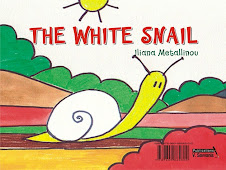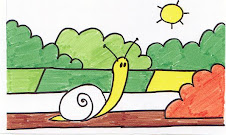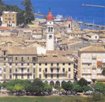
The old castle.
This is the entrance.

Mourayia place, on the way to the old port of the town.
A romantic road in the old town.

Garitsa bay, the promenade.
Today, I display an extract from Aggelina's blog. Aggelina is a ballet dancer and a student at the Open University. She is young and gifted and I think you would like to know how she works.
"Another day spent struggling with the kids in the dance studios.
One could divide the ballet education in 8 levels. Provided a child starts the proper training at the age of 10, it has the potential to become a professional dancer at the age of 18. Academies usually prepare the children for the first level, with pre-ballet courses taken one or two years before the age of 10.
Right now I teach “babies” around 5 years old the basics along with creative dance games. This is a very fun process and although I really hated being with children at first, now I have come to enjoy it tremendously. You can see the fascination and pure joy in their eyes when they dance. I have also come to the conclusion that they are much more able of learning and performing complex combinations than what I was taught during my education. The kids are doing fine and will do much better in the future.
I also have a level 1 class to teach. They have had some elementary training in ballet but still lack some very fundamental elements. The good thing with them is that they do listen to me, and I am able to reason with them in order to lead them to the result I wish. Kids at the age of 10-12 are very intelligent.
The problem is with a strange class I took over. It’s not really a baby-class but its also not 1st level. They have been described to me as something in between, but they cannot do anything. I struggle with them throughout the hour to teach the discipline. To teach them that during this one hour that we train, they have to focus and give 100% of their attention and strength to whatever we practice. It is a very arduous process. Some children lack self-confidence and are very sensitive. I might appear somewhat frightening to them. Others try but are unable to co-ordinate their body and their thoughts.
Ballet is about discipline. It might look ethereal but the whole truth behind it is one of great (self)discipline and concentration. Personally I hate amateur schools of ballet, because they commercialize dance and do not teach the discipline and abilities required to be a dancer. And yet not every child wants to pursue the career of a ballerina. I remember when I was about their age, my teachers where much more strict and abrupt. They were older than me and required extreme discipline in class. They achieved that through fear. They managed to spread a cloud of fear for them among the children. Maybe due to my early training in discipline, I have been able to maintain and hold this discipline throughout all my years of classical training. The importance of it is vital and yet I am not “willing” (though I might be able) to “force” this among kids. I am currently in search of a way to discipline them through reason and common sense. I believe in their intelligence and as soon they start gaining confidence in their abilities, I am sure they will adapt.
It also strikes me as sad, the fact that some kids have so low self-esteem. I do not know the roots of this problem but as a ballet teacher, I would like to teach them the confidence, to present themselves in front of an audience, either dancing or talking in a certain and beautiful manner. Shouldn’t that be a task of the parents or school teachers to perform? It is something in the traditional Greek families that over-protects children to the point of them not being able to do things on their own and trust themselves. It could also be a problem at schools, when the teachers do not treat every child differently according to each individuality and personality. I have always felt inferior as a child, even though my abilities were above normal. That was because my environment did not show the proper trust and belief in me, the proper recognition of my abilities. Kids are not just kids… they can start and learn to achieve great things. And this is going to be my goal.
Learn more by visiting Aggelina at
http://viruswitch.com/blog
































